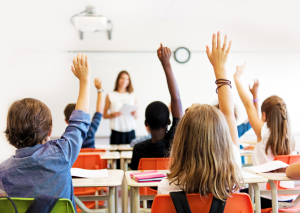
In school, students learn a lot of essential subject matter including general math, English, and science courses. Among these subject matters, it is important to also include safety lessons for the benefit of your students. Fire safety is a major topic that can provide lifelong lessons to students. As school is starting out and lesson plans are being made, including topics of fire safety can go a long way. Keeping your students safe is something all teachers want to do and this is one way to do so.
What Should Be Taught?
Fires can be used as tools for things like cooking, heat, or light, but it is important for everyone to know their dangers as well. Topics that can help educate students may include fire causes and risks, fire prevention, and how to be prepared in case of a fire.
Fire Causes and Risks
Fires are a serious chemical reaction that should be taken seriously. Students should learn about the causes and risks of fires to better understand the importance of fire safety. They should learn that uses like cooking, heat, lighting, and others can also be causes of dangerous fires and should be used appropriately. It can also benefit to teach the risks of your student’s regional areas and what types of fires are more prevalent.
Fire Prevention
Whether you are at home or in school, there are always potential fire risks. With fire prevention lessons you can teach students from a young age the importance of taking away chances of fire before they start. Things like safe grilling and bonfires, keeping up-to-date fire systems, and even passing on the lessons to others, should be taught to prevent fires.
Being Prepared and Staying Safe
Whenever or wherever a fire may occur it is important to be prepared. In the school system, students need to be informed about where to go and what to do in case of a fire. However, not only should they be informed about what to do in school, they should learn about how to be prepared at home or in places outside of school. Preparation lessons they learn in school can be taken home and taught to other family members.
Teaching tools from NFPA
The NFPA offers many teaching tools to those at the head of the classroom. These teaching tools are designed to be engaging and informative to help the students learn more about fire safety.
Some of the tools include:
- Fire safety tip visuals
- Lesson plans
- Tool kits
- Educational videos
- Computer programs
With these tools, students can have fun while learning about important life safety lessons. Teachers can know that they are making a difference when they are informing their students about lessons that can potentially save their life.